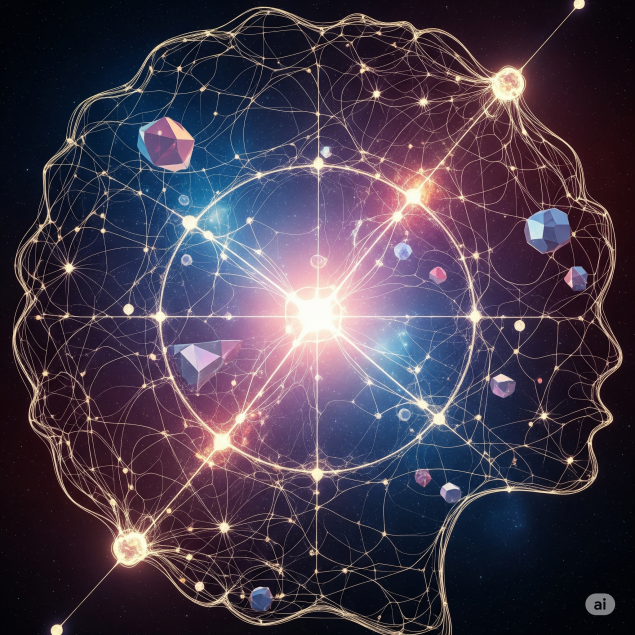185
How to find the source of happiness
Happiness is not a bright flash, but a background signal that should be created, not caught.

Every day, millions of people wake up with the same question: “How to be happy?” We seek happiness in new purchases, relationships, career achievements, as if it were a rare mineral to be found in the right place. But what if we misunderstand the nature of happiness?
The modern science of happiness reveals a surprising truth: happiness is not an accidental event or an external acquisition. It is an internal system that can and should be cultivated like a garden that requires constant but conscious care.
The Anatomy of Happiness: What Happens in Our Brains
Neurobiology of Joy
Studies show that happiness activates the prefrontal cortex of the left hemisphere of the brain, while increasing the production of serotonin, dopamine and oxytocin. These neurotransmitters create a cascade of positive changes in the body, affecting the immune system, cardiovascular function, and even gene expression.
Dr. Sonia Lubomirski from the University of California in his research found that only 10% of our happiness depends on external circumstances. This means that getting the job you want, buying a new home, or even winning the lottery only gives you a temporary burst of satisfaction. The other 90% is under our control.
The paradox of adaptation
The human brain has an amazing ability to adapt. What seemed like a source of infinite happiness yesterday is now becoming the new normal. This mechanism helped our ancestors survive, but in the modern world, it often prevents us from finding lasting satisfaction.
The Four Pillars of Sustainable Happiness

1. Awareness of the present moment
Mindfulness practice is not just a fashion trend – it’s a science-based way to reprogram the brain. Daily 10-15 minutes of meditation increase the thickness of the prefrontal cortex, which is responsible for emotional regulation.
Practical advice: Start with the 5-4-3-2-1 technique: name 5 things you see, 4 things you hear, 3 things you can touch, 2 things you can smell, 1 things you can taste.
2. Deep social ties
The Harvard Happiness Study, which has been going on for more than 80 years, has clearly shown that the quality of our relationships is a major predictor of life satisfaction. People with strong social ties live longer, get sick less often and feel happier.
An effective strategy: Set aside time weekly for deep communication with loved ones. Not superficial talk about the weather, but a real dialogue about feelings, dreams, experiences.
3. Finding meaning
Victor Frankl, a concentration camp survivor, said, “He who knows why to live can endure almost any how.” Modern psychology confirms that people who see meaning in their activities demonstrate a higher level of well-being even in difficult circumstances.
Exercise on meaning: Each night, write down three moments of the day that have made you feel meaningful or helped someone else.
4. Growth and development
Brain neuroplasticity means that we can change and develop at any age. The process of learning new skills activates the brain’s reward systems, creating a natural source of satisfaction.
The principle of progressive growth: Choose one skill and devote 20 minutes to it daily. After a month, you will not only learn a new skill, but also feel a surge of energy from the learning process.
Revolutionary Approach: Happiness as a Skill

Imagine that happiness is not an accident, but a skill that can be developed like playing a musical instrument. Research by neuroscientist Richard Davidson shows that regular practice of “happiness training” physically changes the structure of the brain.
Happiness is not a destination station, but a way of traveling. It comes not from getting what we want, but from understanding the value of what we have.
30 Days to the Source of Happiness
Days 1-10: Creating the Foundation of Mindfulness Daily meditation, keeping a gratitude journal, practicing deep breathing.
Days 11-20: Strengthening social ties. One meaningful conversation a day, expression of gratitude to loved ones, participation in group activities.
Days 21-30: Finding Meaning and Growing Volunteering, learning a new skill, reflecting on life values.
The Architect of Happiness Method
Ask yourself, “What can I do today to create happiness for myself and others?” This simple ritual switches the brain from “happy” to “happy” mode.
Overcoming obstacles to happiness
The greatest enemy of happiness is not sadness, but comparison with others. Social media amplifies this distortion by showing us only the best moments of other people’s lives. Remember, you are comparing your inner reality to someone else’s external showcase.
The phenomenon of the hedonistic treadmill
Psychologists have found that people are constantly raising their expectations. Having achieved one goal, we immediately set the next, more ambitious. This explains why rich people are not necessarily happier than poor people, and celebrities suffer from depression.
The solution lies in cultivating what psychologists call “sufficiency” – the ability to appreciate what you have while striving for growth. This is not passivity, but an active practice of conscious appreciation.
Conclusion: Your personal source of happiness
Happiness is not a random finding, but a purposeful practice. It requires daily attention, just as a flower requires water and light. Start small: one minute of meditation, one thank you, one moment of full presence. Your source of happiness is not out there, but inside you, waiting for your attention and care.
Glossary
Neuroplasticity
The ability of the brain to change its structure and function in response to lifelong learning and experience.
Mindfulness
Practice conscious attention to the present moment without judgment, based on the Buddhist tradition of meditation.
Prefrontal cortex
The area of the brain responsible for decision-making, planning, emotional regulation and social behavior.
serotonin
A neurotransmitter that regulates mood, sleep, appetite, and social behavior, often referred to as the “happiness hormone.”
Hedonistic adaptation
People tend to return to relatively stable levels of happiness despite positive or negative events.
Oxytocin
A hormone produced by the hypothalamus that promotes social bonding, trust and empathy.
dopamine
A neurotransmitter associated with the brain’s reward system, motivation, and expectation of pleasure.
Choosing a monument for mom and dad: features and important nuances
8 Tips to Reduce Visual Tension and Help Your Eyes Rest























